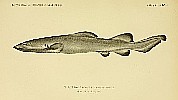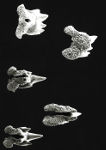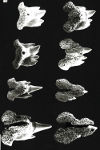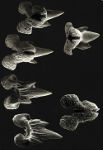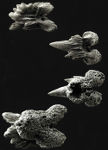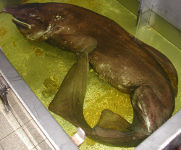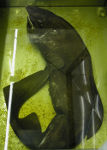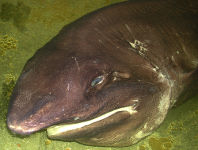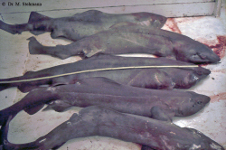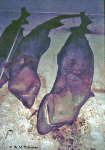Pseudotriakis microdon
De Brito Capello, 1868
False catshark
Classification: Elasmobranchii Carcharhiniformes Pseudotriakidae
Reference of the original description
Descripção de dois peixes novos provenientes dos mares de Portugal. Jornal de Sciências Mathemáticas, Physicas e Naturaes, Lisboa, 1(IV), 314–322
Descripção de dois peixes novos provenientes dos mares de Portugal. Jornal de Sciências Mathemáticas, Physicas e Naturaes, Lisboa, 1(IV), 314–322
Image of the original description
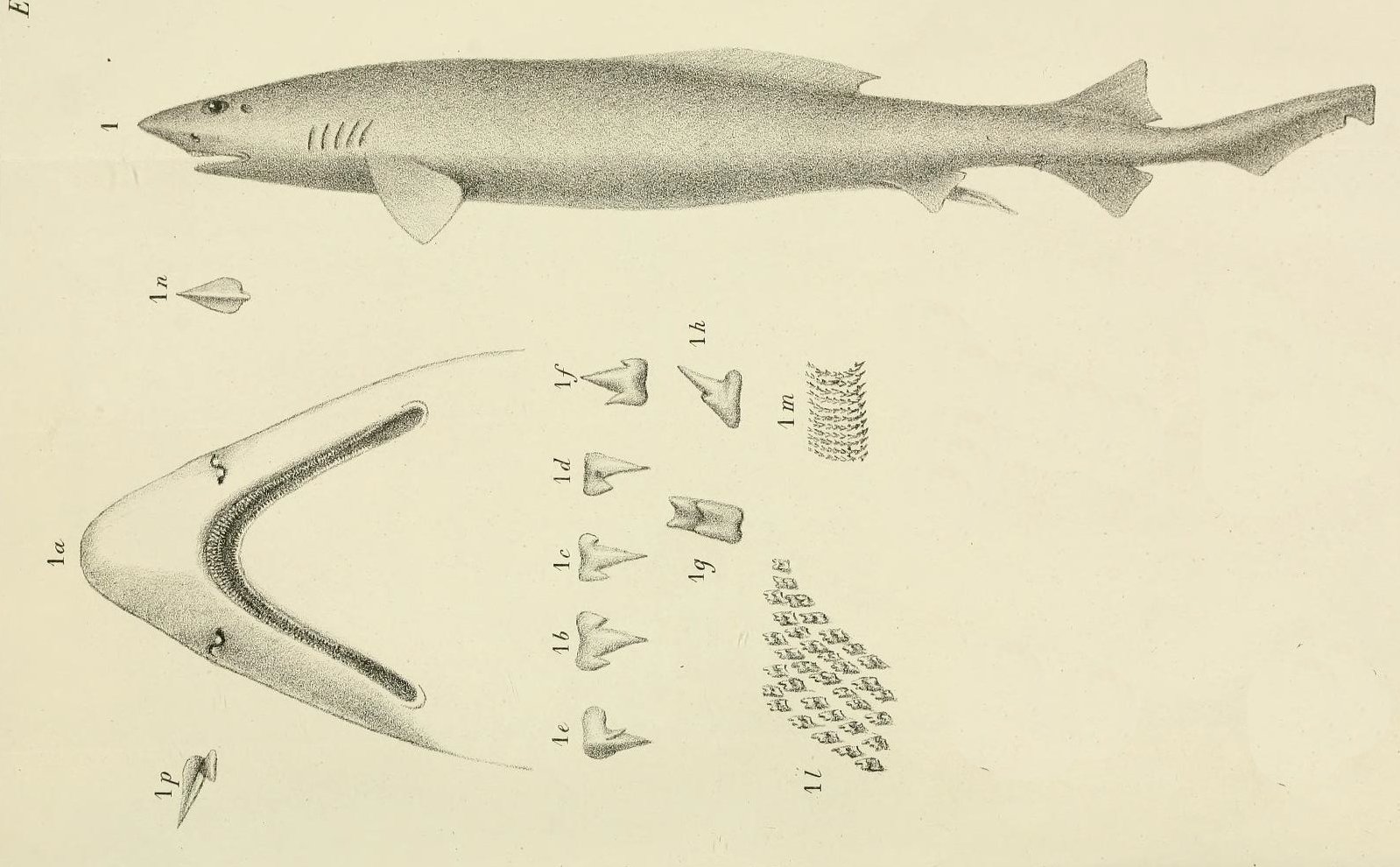
Pseudotriakis microdon De Brito Capello, 1868

Pseudotriakis microdon De Brito Capello, 1868
Synonyms / new combinations and misspellings
Pseudotriacis microdon, Pseudotriakis acrages, Pseudotriakis acrales
Pseudotriacis microdon, Pseudotriakis acrages, Pseudotriakis acrales
Description :
Citation: Pseudotriakis microdon De Brito Capello, 1868: In: Database of modern sharks, rays and chimaeras, www.shark-references.com, World Wide Web electronic publication, Version 12/2025
Please send your images of "Pseudotriakis microdon" to info@shark-references.com
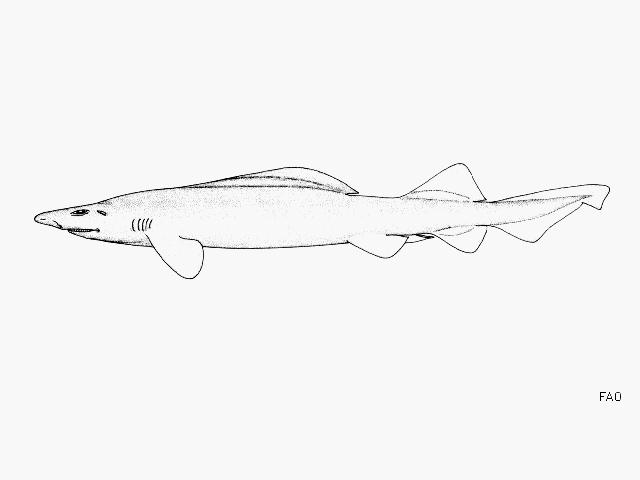
Pseudotriakis microdon De Brito Capello, 1868, © FAO, www.fish-base.org

Pseudotriakis microdon De Brito Capello, 1868, © FAO, www.fish-base.org
Common names
 Atlantischer Falscher Marderhai,
Atlantischer Falscher Marderhai,  Falsa gata,
Falsa gata,  Musolón aleta larga,
Musolón aleta larga,  Musolón de aleta,
Musolón de aleta,  Musolón de aleta larga,
Musolón de aleta larga,  Requin à longue dorsale,
Requin à longue dorsale,  False cat shark,
False cat shark,  False catshark,
False catshark,  Mamôna,
Mamôna,  Mona,
Mona,  Peixe-carago
Peixe-carago
 Atlantischer Falscher Marderhai,
Atlantischer Falscher Marderhai,  Falsa gata,
Falsa gata,  Musolón aleta larga,
Musolón aleta larga,  Musolón de aleta,
Musolón de aleta,  Musolón de aleta larga,
Musolón de aleta larga,  Requin à longue dorsale,
Requin à longue dorsale,  False cat shark,
False cat shark,  False catshark,
False catshark,  Mamôna,
Mamôna,  Mona,
Mona,  Peixe-carago
Peixe-carago
Short Description
Lower lobe of caudal fin hardly developed, its upper edge not rippled and a subterminal notch present [20050]. Uniformly dark brownish-grey, darker on posterior edges of pelvic, dorsal, anal and caudal fins [20050].
Lower lobe of caudal fin hardly developed, its upper edge not rippled and a subterminal notch present [20050]. Uniformly dark brownish-grey, darker on posterior edges of pelvic, dorsal, anal and caudal fins [20050].
Distribution
Western Atlantic: New York and New Jersey, USA. Reported from Cuba [20078]; including Brazil (Ref. 53443). Northeast Atlantic: Atlantic slope off Iceland, France, Portugal, Madeira, Azores, Senegal, and Cape Verde. Indian Ocean: Aldabra Island group and Western Australia [20050]. Pacific Ocean: Japan, Taiwan, New Zealand, and Hawaii [20050]. Source: www.gbif.org
Western Atlantic: New York and New Jersey, USA. Reported from Cuba [20078]; including Brazil (Ref. 53443). Northeast Atlantic: Atlantic slope off Iceland, France, Portugal, Madeira, Azores, Senegal, and Cape Verde. Indian Ocean: Aldabra Island group and Western Australia [20050]. Pacific Ocean: Japan, Taiwan, New Zealand, and Hawaii [20050]. Source: www.gbif.org
Human uses
fisheries: subsistence fisheries
fisheries: subsistence fisheries
Biology
Exhibit ovoviparity (aplacental viviparity), embryos feed on yolk and ova, also consume uterine milk [733] with 2-4 young in a litter [20050] [2539]. Size at birth between 70 and 85 cm ([578] reports it at about 140 cm TL). Distinct pairing with embrace [17086].
Diet: [3667] (data: Eight males (2500-2950 mm TL), four females (1560-2960 mm TL), and six embryos (447-1201 mm TL) from the north Pacific were examined): False catsharks were found to feed predominantly on bony fishes. In north Pacific specimens, two had empty stomachs and one specimen had mud and chyme in the stomach. The others contained such varied items as sharks, bony fishes, fish skeletons and muscles, squid muscles and beaks, and octopi. The identified stomach contents included Etmopterus brachyurus, E. pusillus, Epinnula magistralis, Auxis rochei, Diodon holocanthus, Lagocephalus sceleratus, Gempylidae, Belonidae sp., and Macrouridae sp. Occurs on the continental slope (Ref. 75154).
Exhibit ovoviparity (aplacental viviparity), embryos feed on yolk and ova, also consume uterine milk [733] with 2-4 young in a litter [20050] [2539]. Size at birth between 70 and 85 cm ([578] reports it at about 140 cm TL). Distinct pairing with embrace [17086].
Diet: [3667] (data: Eight males (2500-2950 mm TL), four females (1560-2960 mm TL), and six embryos (447-1201 mm TL) from the north Pacific were examined): False catsharks were found to feed predominantly on bony fishes. In north Pacific specimens, two had empty stomachs and one specimen had mud and chyme in the stomach. The others contained such varied items as sharks, bony fishes, fish skeletons and muscles, squid muscles and beaks, and octopi. The identified stomach contents included Etmopterus brachyurus, E. pusillus, Epinnula magistralis, Auxis rochei, Diodon holocanthus, Lagocephalus sceleratus, Gempylidae, Belonidae sp., and Macrouridae sp. Occurs on the continental slope (Ref. 75154).
Remarks
shark-references Species-ID=5282;
shark-references Species-ID=5282;
Parasites (arranged by Jürgen Pollerspöck)
Cestoda
Isopoda
Cestoda
- Grillotia dolichocephala (Guiart, 1935) [16112]
- Sphyriocephalus viridis (Wagener, 1854) Pintner, 1913 [16112] [25091]
Isopoda
- Politolana concharum (Stimpson, 1853) [23898]








